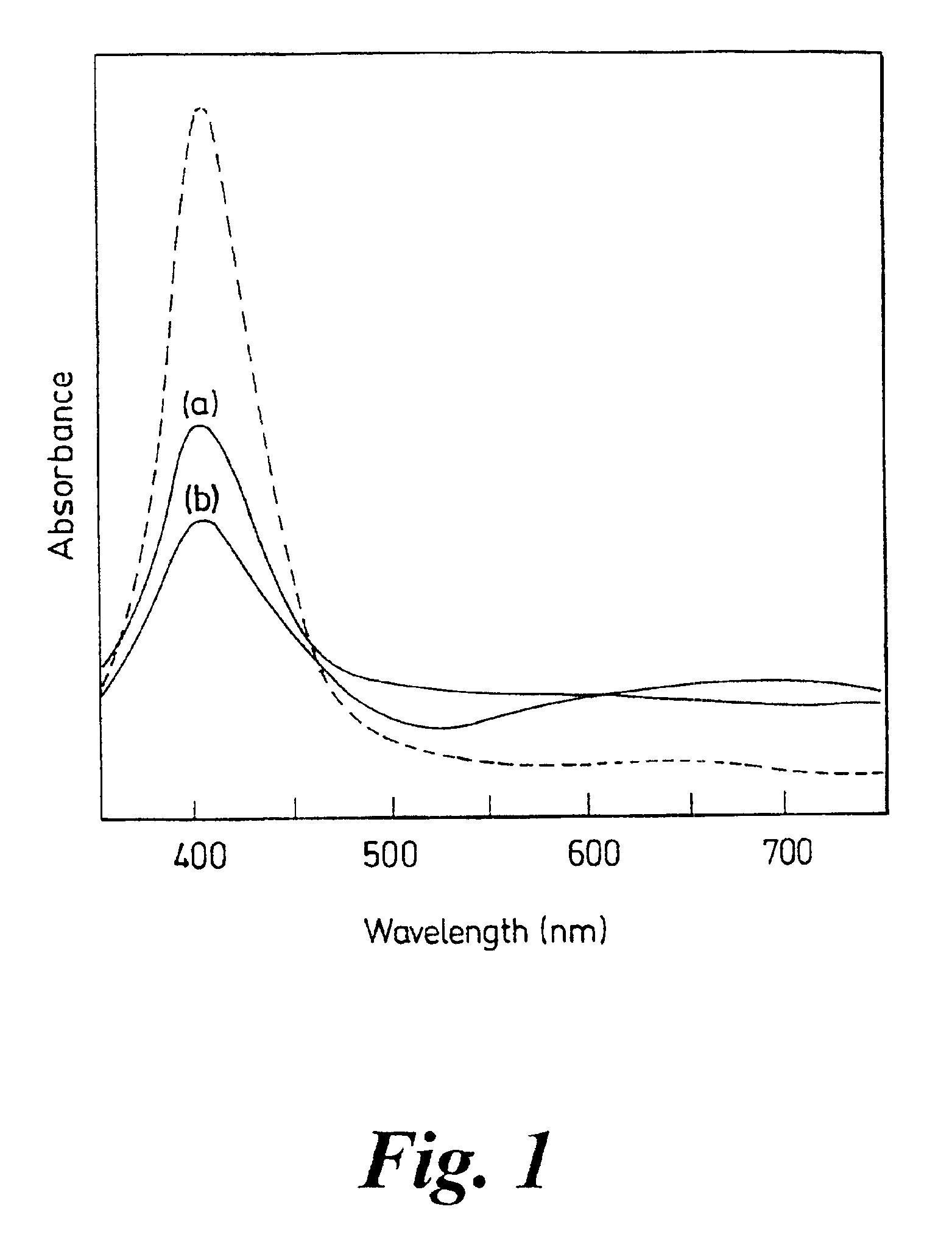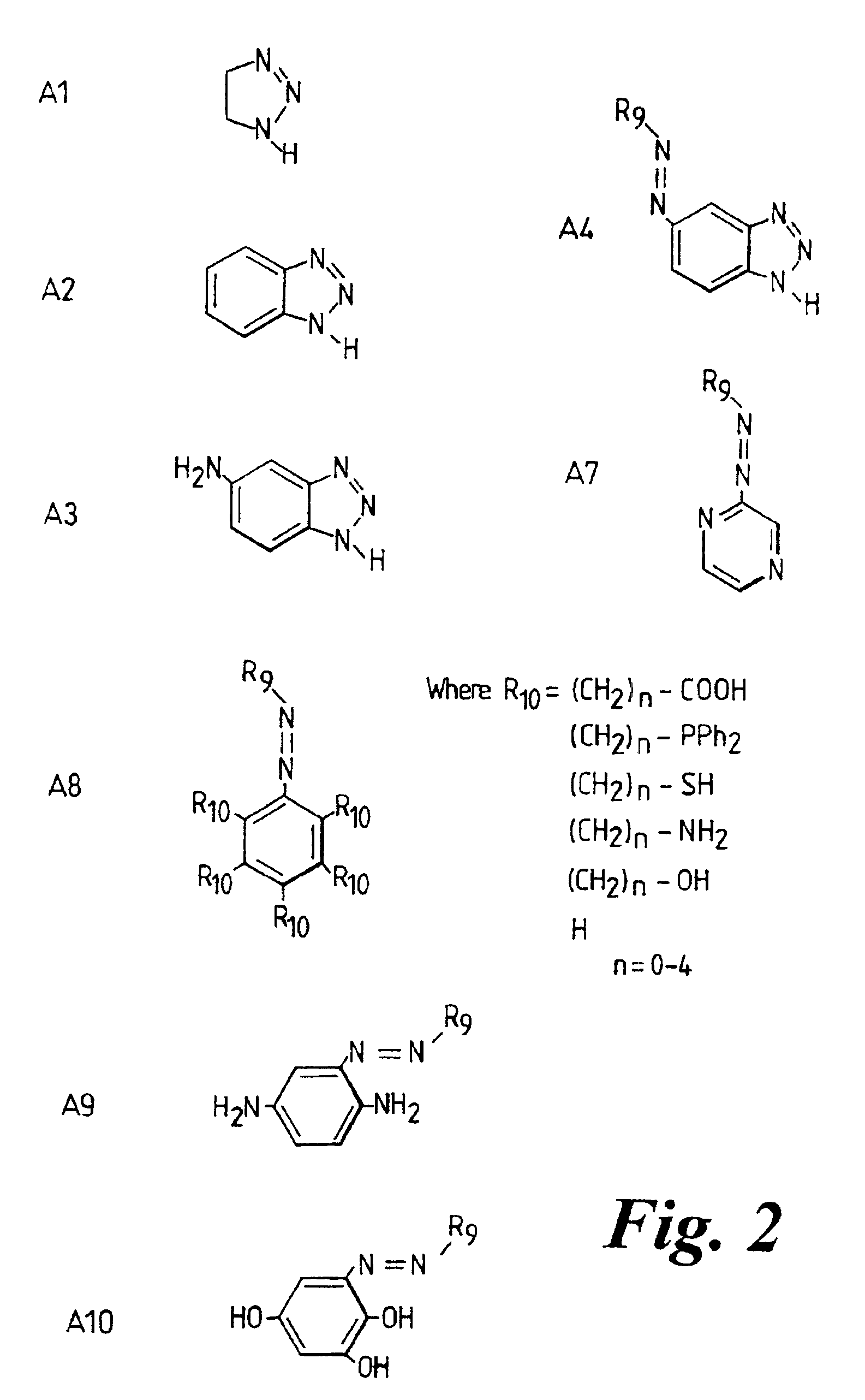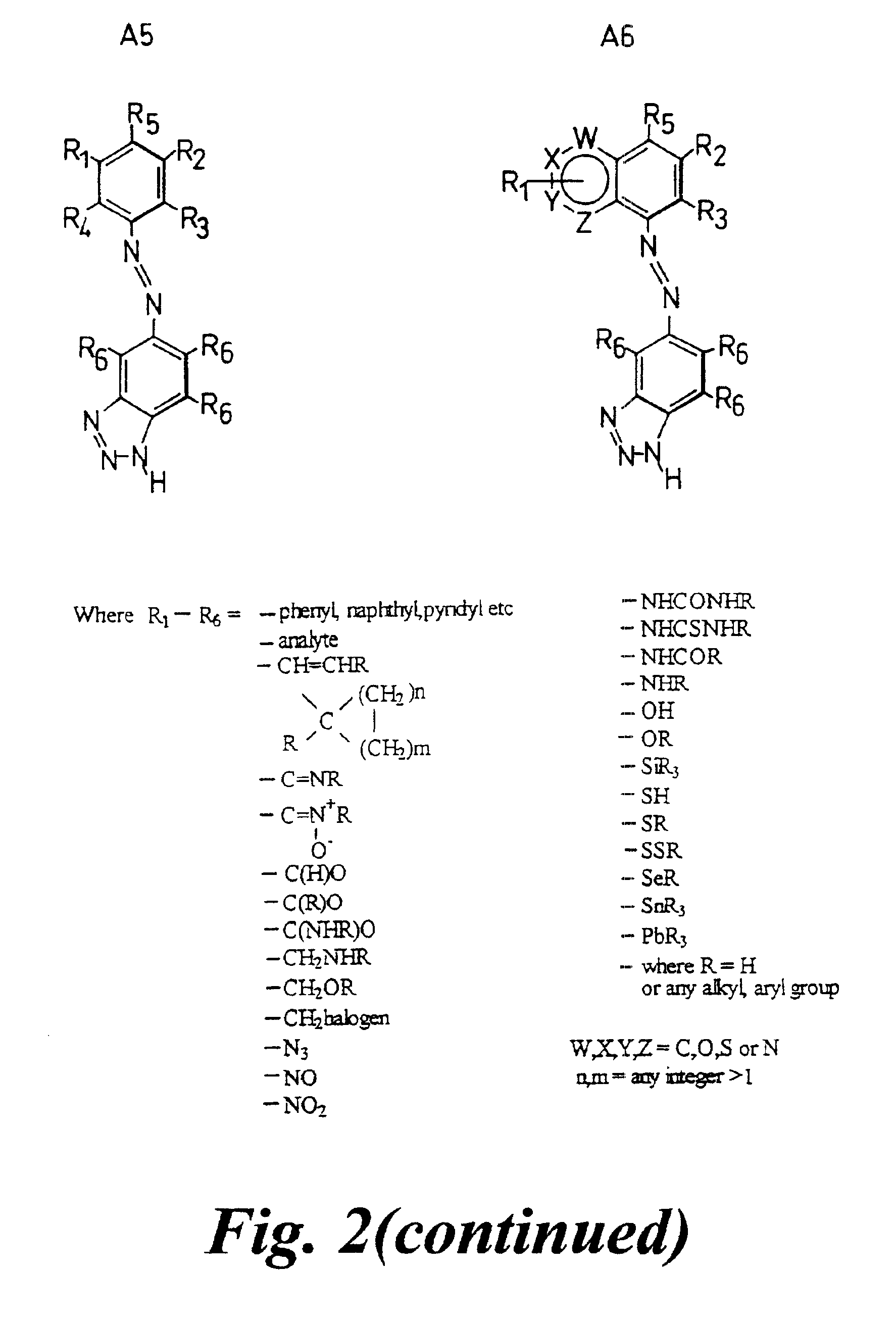Nucleic acid sequence identification
a technology of nucleic acid and sequence identification, applied in the field of nucleic acid sequence identification, can solve the problems of false positive or negative, weak normal raman line, and insensitive raman spectroscopy
- Summary
- Abstract
- Description
- Claims
- Application Information
AI Technical Summary
Benefits of technology
Problems solved by technology
Method used
Image
Examples
example 1
Overview of Synthesis of Labelled PNA Probes and Subsequent Use
[0145]Basic synthesis involves the addition of a carboxylic acid or an active ester form of a benzotriazole dye to the amino terminus of a PNA probe, optionally while the PNA is on a solid support used for synthesising it. The probe consists of eight or more bases complementary to part of a target sequence found in genomic DNA. Thus the bases will still be protected, but the primary amine is free for reaction.
a) Synthesis of Benzotriazole Carboxylic Acid or Active Ester
[0146]An amino alkylated aromatic amine, such as N-(1-naphthyl)ethylenediamine dihydrochloride, is coupled to aminobenzotriazole via a diazonium coupling to produce a monoazo dye. The free amine then reacts with succinic anhydride to provide a carboxylic acid (see FIG. 4).
[0147]In more detail, to provide N1-[4-(5-Azobenzotriazoyl)phenyl]-ethane-1,2-diamine (=Compound 1), 5-Aminobenzotriazole (0.854 g, 1.1 eq, 6.37 mmol) was dissolved in HCl (5ml, 50% v / v) ...
example 2
Carrying Out Detection
(a) Labelled DNA
[0160]A SERRS spectrum of the benzotriazole dye labelled 26mer DNA oligonucleotide has been obtained and is shown in FIG. 5.
[0161]The SERRS signals were only visible once an aggregating agent (spermine) had been added thus confirming that benzotriazole dye labelled DNA could be added to colloid without producing any signals and that a hybridisation-linked aggregation could generate a detectable change.
(b) Labelled PNA
[0162]As described above, the two non-complementary sequences of PNA are attached, via an N-terminus-SERRS label, to separate colloidal silver particles using is monoazobenzotriazole compounds to provide effectively irreversible attachment of the PNA to the surface. This provides a system which will consecutively hybridise to a complementary sequence on a parent strand.
[0163]When the two colloidal mixtures containing the tethered specific nucleic acid or nucleic acid analogue sequences are mixed together then irradiated, no SERRS si...
example 3
Using Separate SAS and TBS
[0174]There is no requirement that the SAS (e.g. dye) and TBS (e.g. PNA) be incorporated into a single molecule. They can be separately associated with the metal surface.
[0175]For instance, benzotriazole may be associated with the N-terminus of PNA or 5′-terminus of DNA (the latter optionally via an amino linker, while attached to controlled pore glass by analogy with standard extension techniques). A separate SAS dye group may be conjugated to benzotriazole (e.g. to form an azobenzotriazole group).
[0176]Generally speaking an excess of dye to PNA will be required (see FIG. 3(b)). Assuming a colloidal particle approximates to a sphere of radius 20 nm, this has a surface area of approx. 1×10−15 m2.
[0177]Using benzotriazole as a SSG (for both the dye and PNA), the size of this molecule can be taken as a square 10×10−10 m by 10×10−10 m. This gives an area per molecule of 1×10−18 m2. Therefore the number of molecules required for monolayer coverage is approx. 12...
PUM
| Property | Measurement | Unit |
|---|---|---|
| absorption wavelength | aaaaa | aaaaa |
| size | aaaaa | aaaaa |
| wavelengths | aaaaa | aaaaa |
Abstract
Description
Claims
Application Information
 Login to View More
Login to View More - R&D
- Intellectual Property
- Life Sciences
- Materials
- Tech Scout
- Unparalleled Data Quality
- Higher Quality Content
- 60% Fewer Hallucinations
Browse by: Latest US Patents, China's latest patents, Technical Efficacy Thesaurus, Application Domain, Technology Topic, Popular Technical Reports.
© 2025 PatSnap. All rights reserved.Legal|Privacy policy|Modern Slavery Act Transparency Statement|Sitemap|About US| Contact US: help@patsnap.com



